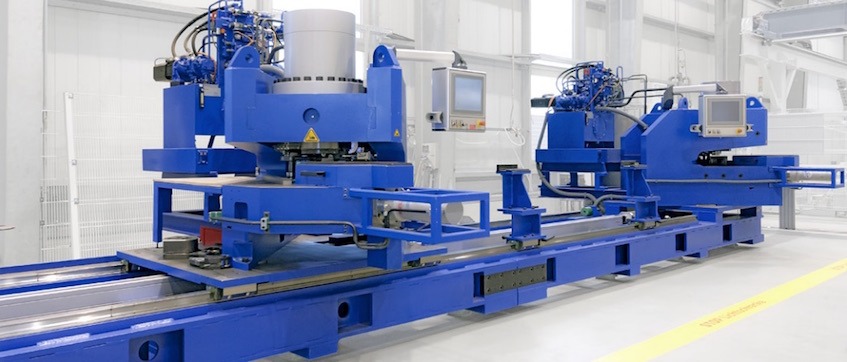A Custom Bending Solution for Siemens
International manufacturer Siemens produces high-efficiency generators at the upper end of the scale, from 165 MVA upwards. The raw material for these generator rotor coils is either solid drawn copper, or hollow profile copper bars, which are installed in sets, meaning tight bending tolerances are necessary. Read on to learn about a custom bus bar bending and punching solution that we developed in collaboration with Siemens’ engineers
The Bus Bar Challenge
Due in part to the tight tolerances and material being bent, distortion on the inside edge close to the bending point during production of parts posed a problem. In the past this had to be dealt with before production could continue with another work step on a second machine by pressing both sides of the conductor. Depending on the material composition, bending angle and bending radius, the result was not consistently acceptable.
Siemens decided to invest in a totally new bending technique to give them enhanced efficiency and quality. Their goal was to reduce the work
steps from two on two machines to one on one machine, and thus to greatly improve productivity, accuracy repeatability and to gain greater flexibility by reducing tool changeover times.

The Bus Bar Solution
EHRT responded by collaborating with Siemens’ engineers to design and install a double axial bending machine that performed clamping, bending and pressing in a single machine.
Our solution involved two mirror-image bending presses that enabled machining of both ends of the conductor at the same time. With one fixed unit and one moveable unit, an integrated length measurement system guarantees the accurate positioning of the moveable unit. When the raw material is inserted, it is positioned and clamped. The bending process then takes place at both ends. Our patented spring-back compensation system takes care of any spring-back.
The material distortion that was previously fixed with a secondary process is straightened out at both ends simultaneously by the press unit, and the bent angle is checked again. The accuracy of the bent angle obtained by this method is +/-0.15o, the material distortion after pressing is only a maximum of 0.04mm. The whole process time for a conductor is well under a minute, and the complete production process is automated.
Our team was successful in condensing the two-step machining process, formerly using two machines, into one process on one machine. This also reduced the inaccuracies by about a factor of 10, because the conductor is now firmly clamped in place during the whole procedure.
The operator no longer has to waste time positioning the piece for every bending and punching step, which led to inaccuracies. Tool-changing times have been radically reduced by our easy-to-change tooling system. This new machine has saved over 90 working hours just in the production of the rotor coil conductors for one generator. That’s a substantial savings!
If you’re looking for a creative solution to a bus bar fabrication challenge, contact us today. We look forward to helping design a perfect solution for your unique application.